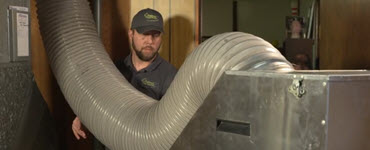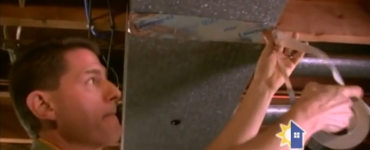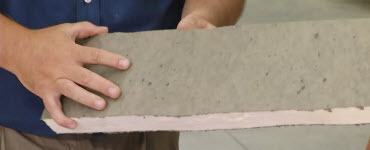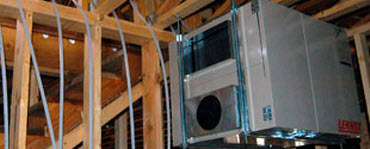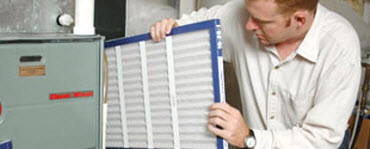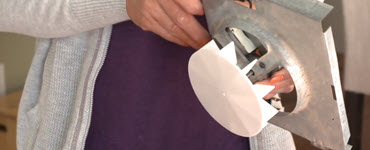Assessing your indoor air quality
This stagnant environment can cause indoor air quality problems - sometimes called "sick house syndrome."
What it is
"Indoor air quality" refers to the cleanliness of the air inside your home. Inadequate ventilation can lead to build-up of pollutants like mold, mildew, secondhand cigarette smoke, fumes from household chemicals, environmental allergens like pollen and more.In a poorly-ventilated house, the air inside may be more health-threatening than living in a smog-infested urban area!
Health effects
The most common symptoms are allergies and other breathing difficulties. People with respiratory problems like asthma are particularly vulnerable to the dust, smoke and other allergens that linger in the home.Indoor air pollution can cause also life-threatening situations, including carbon monoxide poisoning, radon poisoning and toxic mold.
Curing your sick house
Fortunately, even the most "polluted" home can be rescued with the use of air testing and mechanical ventilation systems.
If you suspect air quality problems in your home, the first step is to call your heating and cooling contractor. If their company doesn't perform the testing, they can recommend another qualified professional.
Your contractor will use electronic monitoring devices to measure the amount of air flowing through your home, known as "air exchanges." The American Society of Heating, Refrigeration & Air Conditioning Engineers recommend a minimum of 8.4 air exchanges in a 24-hour period - but most homes average less than five!
If your contractor confirms your suspicions, he or she will recommend a mechanic ventilation system, such as a heat recovery ventilator. These machines are integrated with your existing heating and cooling systems to monitor the air inside your home. Even if your furnace or air conditioner isn't running, the ventilator will ensure that fresh air circulates.
An added benefit of a heat recovery ventilator is energy savings - it works as supplemental heat source, reducing the demand on your furnace.
Indoor air quality testing and mitigation can cost between $1,800 and $2,600. While the cost is high, the benefits for your family's health - and the reduction in your medical bills - can be significant.
In this video: An expert discusses home ventilation audit results and how the homeowners can remediate the issues that were found.
More from this category
Sealing ductwork
Leaky ductwork is one of the most common household problems. Luckily, it's easy to fix with the right materials.
Sealing leaks and ventilation
Have you heard the myth that it is possible to make your home too tight? Find out how you can seal up all the air leaks and keep your home safe at the same time.
Controlling the humidity
An automatic whole-house humidifier connected to your existing heating system can provide continuous, no-maintenance moisture control.
Heat recovery ventilators
A heat recovery ventilator exchanges air inside your home with fresh outdoor air. It can also help lower your energy bills.
Air filtering and cleaning
Proper filtering and/or cleaning of the air we breathe can help with allergies, asthma or other respiratory problems.
Replacing ventilation fans
Don’t tear up your ceiling to replace a bad ventilation fan. We’ll show you how to easily switch it out for an energy efficient fan.

